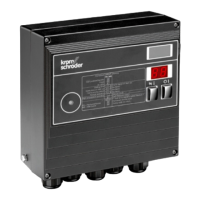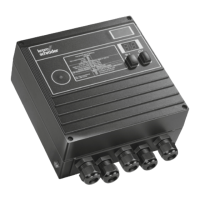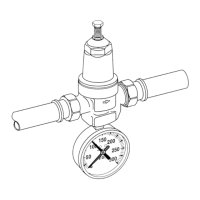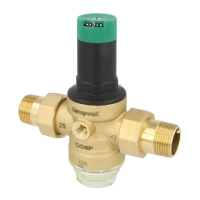BCU 460, BCU 465 · Edition 11.19 37
Low NOx mode (flameless operation)
Flame mode
In order to heat up the furnace, the burner operates in
Flame mode.
The ignitable gas/air mixture is ignited using an electri-
cal ignition spark and combusts inside and outside of
the ceramic burner tube. The presence of the flame is
monitored in compliance with EN746-2.
Flameless mode
As soon as the combustion chamber temperature is ≥
850°C, the burner control unit BCU..D2 can switch to
flameless operation.
Gas and air are supplied via the same connections as in
Flame mode. No ignition takes place in the burner tube.
The combustion process is relocated to the combustion
chamber. The oxidation reactions take place without a vis-
ible flame. Compared to traditional Flame mode, the reac-
tion zone is considerably larger and the reaction density
considerably lower. This prevents the occurrence of peak
temperatures which are responsible for high NO
x
values.
Emissions of NO
x
are drastically reduced.
850 1050 1250120011501100900 1000950
0
100
200
300
400
Furnace temperature [°C]
NO
x
[mg/m
3
, ref. 5% O
2
]
Flame mode
Natural gas, air preheating to 450°C
In Flameless mode, the NO
x
values can be reduced to
below 150mg/m³ (reference value of 5% O
2
) even at
a furnace temperature of 1200°C and hot air at 450°C
without expensive additional piping. The high output
pulse frequency and rotary impulse control ensure tem-
perature uniformity which is of great advantage.
For further information on burner BIC..M,
see www.docuthek.com

